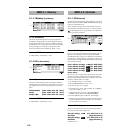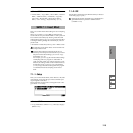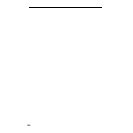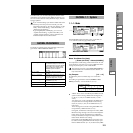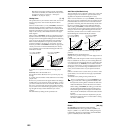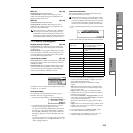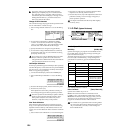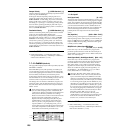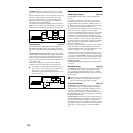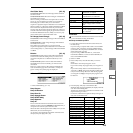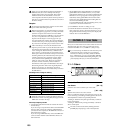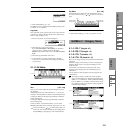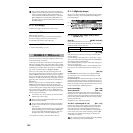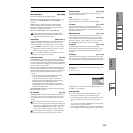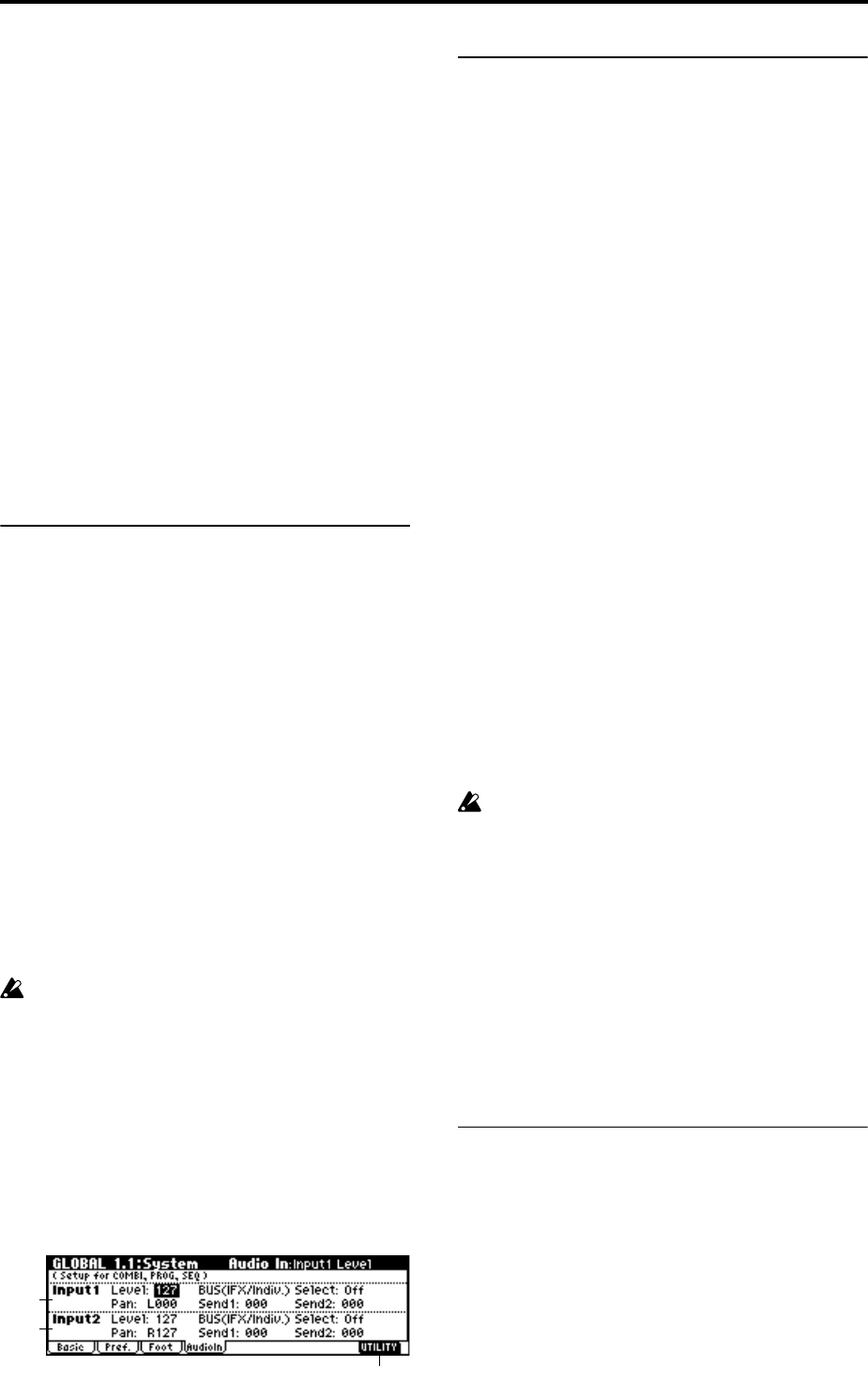
126
Damper Polarity [(–) KORG Standard, (+)]
Set this to match the polarity of the damper pedal connected
to the rear panel DAMPER jack.
If a Korg DS-1H (sold separately) damper pedal is con-
nected, the pedal switch polarity will be (↓), so select “(–)
KORG Standard” for this setting. If you have connected a
damper pedal with a positive (↑) polarity, select “(+)” for
this setting. (↓ is open-type, ↑ is closed-type.) If the polarity
does not match, operating the damper pedal will not pro-
duce the correct result. If no damper pedal is connected, set
this to “(–) KORG Standard.”
Foot Switch Polarity [(–) KORG Standard, (+)]
Set this to match the polarity of the pedal switch connected
to the rear panel ASSIGNABLE SWITCH jack.
If a Korg PS-1 (sold separately) pedal switch is connected,
the pedal switch polarity will be (↓), so select “(–) KORG
Standard” for this setting. If you have connected a pedal
switch with a positive (↑) polarity, select “(+)” for this set-
ting. (↓ is open-type, ↑ is closed-type.) If the polarity does
not match, operating the pedal switch will not produce the
correct result. If no pedal switch is connected, set this to “(–)
KORG Standard.”
■ 1.1–3b: UTILITY
☞“Write Global Setting,” “Load Preload/Demo data,”
“Change all bank references,” “Half Damper Calibration,”
“After Touch Calibration” (1.1–1d)
1.1–4: AudioIn (Audio In)
This page will be displayed (and will be operable) only if the
EXB-SMPL is installed.
If the EXB-SMPL option (sold separately) is installed, you
can use Sampling mode to record an external analog audio
source while applying the insert effect to it. In other modes,
the insert effect, master effects, and master EQ can be
applied to the external analog audio signal, allowing you to
use the TRITON Le as a 2-in 4-out effect processor, or to use
external sounds in conjunction with internal sounds.
The settings here are valid for Combination, Program, and
Sequencer modes, and will determine the input, level, pan,
bus, and master effect send levels from rear panel AUDIO
INPUT 1 and 2.
These settings will have no effect in Sampling mode. If
you move from Sampling mode to Global mode, the
“Audio Input” settings of Sampling mode will be main-
tained, and it will not be possible to view settings.
Please move here from a mode in which external audio
signals can be input (Combination, Program, or
Sequencer mode). In Sampling mode, the rear panel
AUDIO INPUT 1 and 2 settings can be made in the
same way as here, using the parameters in “Input1,”
“Input2” (SMPL 1.1–3). In Sampling mode, you can
record while applying insert effect to the external audio
source that is input from AUDIO INPUT 1 and 2. (The
master effects and master EQ cannot be used.)
1.1–4a: Input1
1.1–4b: Input2
Level (Input Level) [0...127]
The analog audio signal from AUDIO INPUT 1 and 2 is con-
verted by an AD converter from an analog signal to a digital
signal. This parameter sets the signal level immediately after
the sound has been converted into a digital signal. Normally
you will set this to 127. If the sound is still distorted even
after this level is lowered significantly, it is possible that the
sound is distorting before the AD converter. Adjust the
[LEVEL] knob or the output level of the external audio
source.
Pan (Input Pan) [L000...C064...R127]
Sets the panning of the signal from AUDIO INPUT 1 and 2.
When inputting a stereo audio signal, you will normally set
Input 1 to L000 and Input 2 to R127 (or, Input 1 to R127 and
Input 2 to L000). When inputting a monaural audio signal,
normally set this to C064.
BUS(IFX/Indiv.) Select (Input BUS Select)
[L/R, IFX, 1, 2, 1/2, Off]
In the same way as for the oscillators of a program, this
parameter specifies the bus to which the external input of
AUDIO INPUT 1 and 2 will be sent (
☞7. Effect Guide, Insert
Effect “2–4. Audio Input”).
Send1(Input Send1), Send2(Input Send2) [000...127]
In the same way as for the oscillators of a program, this
parameter specifies the send levels from the external input
of AUDIO INPUT 1 and 2 to the master effects. If “BUS
(IFX/Indiv.) Select” is set so that an insert effect is being
applied to the external input, the send levels to the master
effects are set after the signal passes through IFX by “S1
(Send1(MFX1),” “S2 (Send2(MFX2)” (7.1–2). (
☞7. Effect
Guide, Master Effect “2–4. Audio Input.”)
When the “BUS (IFX/Indiv.) Select” setting is other
than Off and the “Level” value is raised, the external
input sound will be input to the TRITON Le. If audio
cables are connected to the rear panel AUDIO INPUT 1
and 2 jacks at this time, noise will be input (even if there
is no incoming audio signal) into the TRITON Le, and,
depending on your settings, in some cases may be out-
put from the AUDIO OUTPUT L/MONO, R, 1, 2 jacks.
If you are not using an external audio input source, and
are only playing programs, combinations, or songs etc.
that use the TRITON Le’s internal sounds, turn “BUS
(IFX/Indiv.) Select” Off, or set “Level” to 0.
If audio cables are not connected to the rear panel
AUDIO INPUT 1 and 2 jacks, the input data that passes
from the AD converter into the TRITON Le will be
forced to zero, so that no noise will be input.
■ 1.1–3c: UTILITY
☞“Write Global Setting,” “Load Preload/Demo data,”
“Change all bank references,” “Half Damper Calibration,”
“After Touch Calibration” (1.1–1d)
1.1–4a
1.1–4b
1.1–4c



